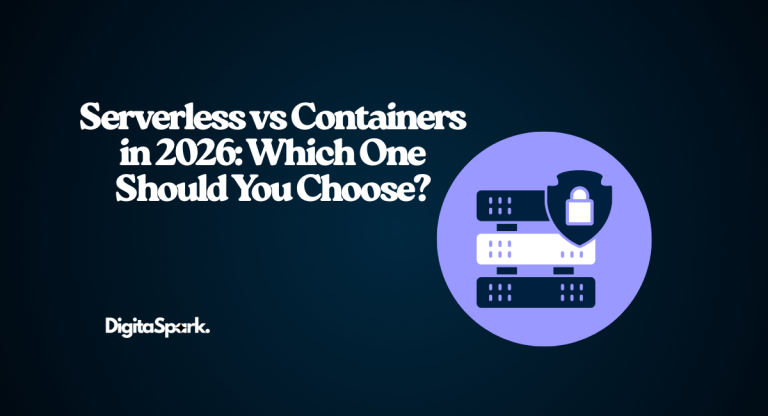What is CQATest? Is This App a Virus? Should I Delete This App?
What is CQATest?
Aiming at guaranteeing the quality, dependability, and maintainability of software code, CQATest, sometimes known as Code Quality Assurance Test, is a thorough method and set of guidelines. Focused on spotting and fixing flaws, vulnerabilities, and inefficiencies in code before it is put into use in production, this test is a fundamental part of the software development lifecycle (SDLC). Implementing CQATest helps development teams create excellent software that satisfies user expectations, follows industry standards, and runs well under various circumstances. The approach covers a broad spectrum of testing approaches, instruments, and methods all meant to assess the code from many angles, including functionality, performance, security, and maintainability.
Maintaining that the code follows accepted coding standards and best practices is one of CQATest’s main aims. Static code analysis and code reviews often help one accomplish this. Code reviews—manual or peer-reviewed analysis of the codebase—search for problems including inadequate readability, ineffective algorithms, or departures from coding standards. Conversely, static code analysis detects possible faults, security flaws, or coding standard breaches using automated programs that scan the code without running it. Early identification of problems in the development process allows CQATest to lower the cost and work involved in later in the SDLC fault correction.
Unit testing—that is, testing individual components or units of code to guarantee they operate as they should in isolation—is another important feature of CQATest. Usually automated and authored by developers as they code, unit tests For this aim, frameworks such as JUnit (for Java), NUnit (for .NET), and pytest (for Python) are rather popular. Integration testing comes next to unit testing to ensure that several departments or services cooperate as expected. Integration testing helps find problems, including data mismatches or communication breakdowns that could develop when parts interact. The basis of CQATest is thus unit and integration testing, which guarantees that the code is functionally perfect and well-integrated.
CQATest comprises security testing and performance testing in addition to functional testing. Under several circumstances, including high user loads or restricted system resources, performance testing assesses the efficiency, scalability, and responsiveness of the code. Tools like JMeter and LoadRunner frequently model real-world scenarios and system performance measurement.
Conversely, security testing is more concerned with spotting weaknesses and guaranteeing the code is safe against possible hazards, including SQL injection, cross-site scripting (XSS), or illegal access. OWASP ZAP and Burp Suite are two security testing tools that developers can use to find and fix vulnerabilities in their products. This makes sure that the products are honest and strong.
Often included in continuous integration/continuous deployment (CI/CD) pipelines, CQATest helps provide ongoing quality assurance. Automating testing procedures and including them in the CI/CD process helps development teams find and resolve problems early on, therefore guaranteeing that only top-notch code is put into use in production. Simplifying these processes depends critically on automated testing tools such as GitLab CI/CD, Jenkins (for CI/CD orchestration), and Selenium (for UI testing). This integration enhances not just the effectiveness of the development process but also the team’s quality and responsibility culture.
CQATest is a comprehensive approach that ensures code quality by integrating both automated and manual testing methods. It covers code reviews, static analysis, unit testing, integration testing, performance testing, and security testing, all aimed at creating dependable, safe, and high-performance software. Teams may lower the chance of flaws, increase maintainability, and guarantee that the program satisfies both user and corporate needs by including CQATest into the development process. In the end, CQATest is a necessary habit for every company dedicated to providing top-notch software in a cutthroat market moving quickly.
Do I Need The CQATest App?
A CQATest app may or may not be necessary, depending on your role, the complexity of your projects, and your objectives for code quality assurance. As a developer or member of a development team, a CQATest app can be quite helpful. Early problem detection, coding standard enforcement, code maintainability, and the automation of tedious processes like unit and integration testing are all aided by it.
To successfully control the quality of your codebase, a CQATest app is practically necessary for large or complicated projects. Delivering dependable, safe, and high-performing software is essential, and a CQATest app is essential for this. Functionality is guaranteed, security is improved, performance is maximized, and compliance standards are met, particularly in sectors with stringent regulations. Without a CQATest app, you run the danger of releasing software that has undiscovered bugs, security holes, or performance problems, which can harm your brand and require expensive remedies.
With continuous integration/continuous deployment (CI/CD), a CQATest app is essential for your team. By enabling continuous feedback, accelerating development, and integrating testing into the pipeline, it ensures the release of only the highest-quality code. CQATest software assists in identifying technical debt, monitoring code health, and efficiently scaling testing efforts for large or growing codebases.
Lack of it can make maintaining a big codebase too much to handle, which lowers productivity and raises the possibility of errors. Furthermore, while working with other developers or contributing to open-source projects, a CQATest app makes sure your work complies with project requirements, avoids adding defects, and meets quality standards, which fosters trust with maintainers.
But in some situations, a CQATest app might not be required. Manual testing and code reviews may be adequate for small, straightforward projects. As a solo developer or member of a small team with limited resources, you may place more importance on necessary testing than on extensive CQATest tools. If you are learning, experimenting, or developing a prototype, you may also delay CQATest until the project reaches a more mature stage. Finally, a CQATest app is a must if you are serious about producing high-quality software, particularly in a team or professional setting. It assists in automating testing, enforcing coding standards, identifying problems early, and guaranteeing the dependability, security, and performance of your software. Investing in a CQATest tool will pay off in the long term, even though you may begin with manual testing for small or personal projects.
If you don’t want to install apps for games, you can enjoy them in the browser.
Is The CQATest App a Virus?
No, the CQATest app is not a virus by nature. Apps or tools from CQATest are genuine software programs made to assist teams and developers in ensuring code quality using various testing techniques, including performance, integration, unit, and static code analysis. The software development industry makes extensive use of these technologies to increase the security, maintainability, and dependability of codes. SonarQube, ESLint, JUnit, and Selenium are a few examples of well-known CQATest products that are extensively used and trusted by developers across the globe.
CQATest apps, like any software, have the potential to be abused or impersonated by actors. For example, a CQATest program may come with viruses or malware if you acquire it from an unofficial or unreliable source. Always download software from reliable platforms or official websites to avoid this, and make sure your antivirus program is up to date. A utility called “CQATest App” may be disguised malware if it exhibits odd behavior, such as slowing down the system, presenting unexpected pop-ups, or asking for more rights. In these situations, you should use a trustworthy antivirus tool to check your computer and get rid of any questionable malware.
How Do I Get Rid of The CQATest App?
The procedure for removing the CQATest app from your computer will differ based on the system you’re using (e.g., Windows, macOS, or mobile devices) and how the software was installed.
To uninstall it on Windows, go to Programs and Features in the Control Panel, look for any remnant files in C:\Program Files, and, if necessary, block it from starting in Task Manager. Drag the application from the Applications folder to the Trash on macOS, then remove the related files from ~/Library/Application Support/ and ~/Library/Preferences/. On iOS, press and hold the app icon and select Remove App; on Android, select the app and hit Uninstall. Use reputable antivirus software, such as Malwarebytes or Windows Defender, to perform a thorough system scan if you think the app is harmful. To prevent future problems, only download software from authorized sources.
Should I Delete The CQATest App?
You may wish to remove the CQATest app, depending on your specific situation and usage patterns. You shouldn’t remove the application if it is a valid tool for code quality assurance testing (such as static analysis, unit testing, or performance testing) and you or your team actively use it to enhance the quality of software. It is essential for guaranteeing the dependability, security, and maintainability of your code.
It may be wise to remove software that is not used, unnecessary, or causing problems (such as wasting system resources or acting strangely). Additionally, if you believe the software to be harmful or if it was downloaded from an unreliable source, you should immediately delete it and run a malware scan on your computer. To reduce security threats, make sure you only download software from reliable or approved sources.







